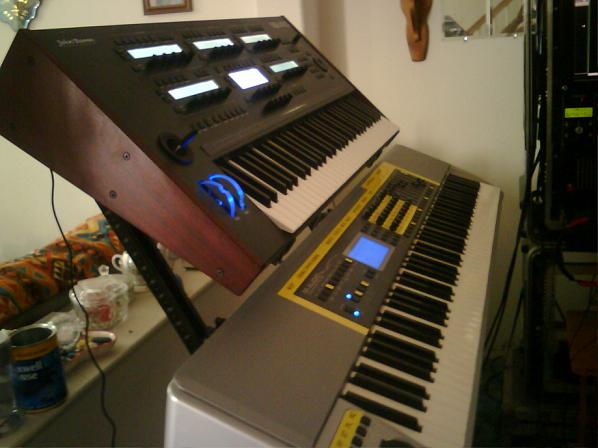|
Dante: With performance controllers such as dual ribbons as well as twin controller wheels the Solaris is a natural choice for live performance. But one feature that really sets it apart is it's usability in the dark. Not such an unexpected scenario for a keyboard player, but surprisingly enough a consideration more often overlooked than not by the big name keyboard manufacturers. Not only are there six dedicated LCD displays, but they are backlit for easy readability in all lighting conditions. The controller wheels are also lit to glow in the dark. The Solaris also features an impressive array of performance buttons like Unison/Transpose. How well do these go down live? Jimmy: These are so well designed for live work. I just love doing string parts and raising the pitch up an octave or adding thicker unison voicing's, and having them active on the next played notes. Nice to have a synth built by someone who has been around the stage instead of downloading source code from the internet. Dante: The profile of the beast reminded me of the Yamaha DX1, due to its depth. I wondered how this would effect studio or live performance space. |
|
|||||||||||||
|
||||||||||||||
|
Dante and Jimmy October 2011 |
|
|
